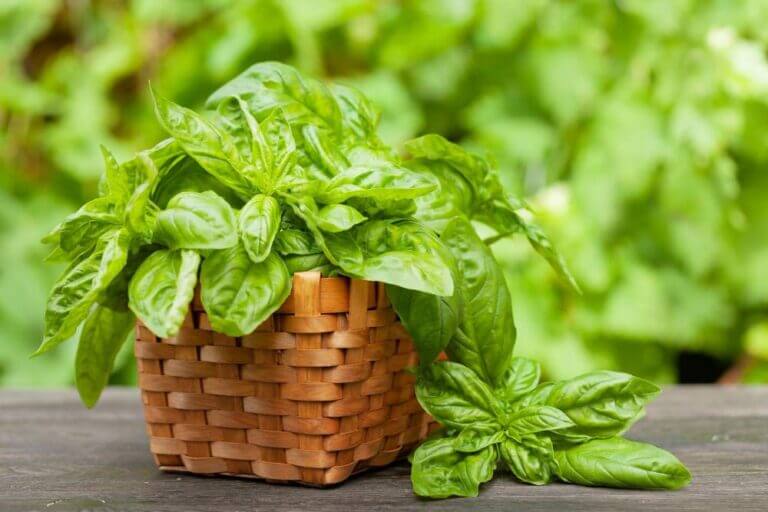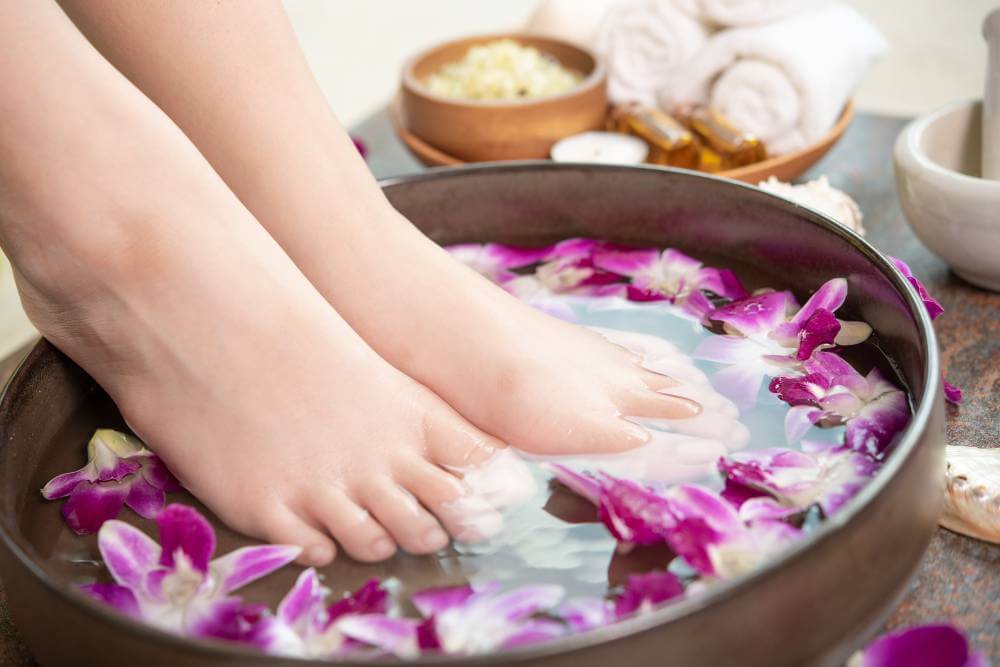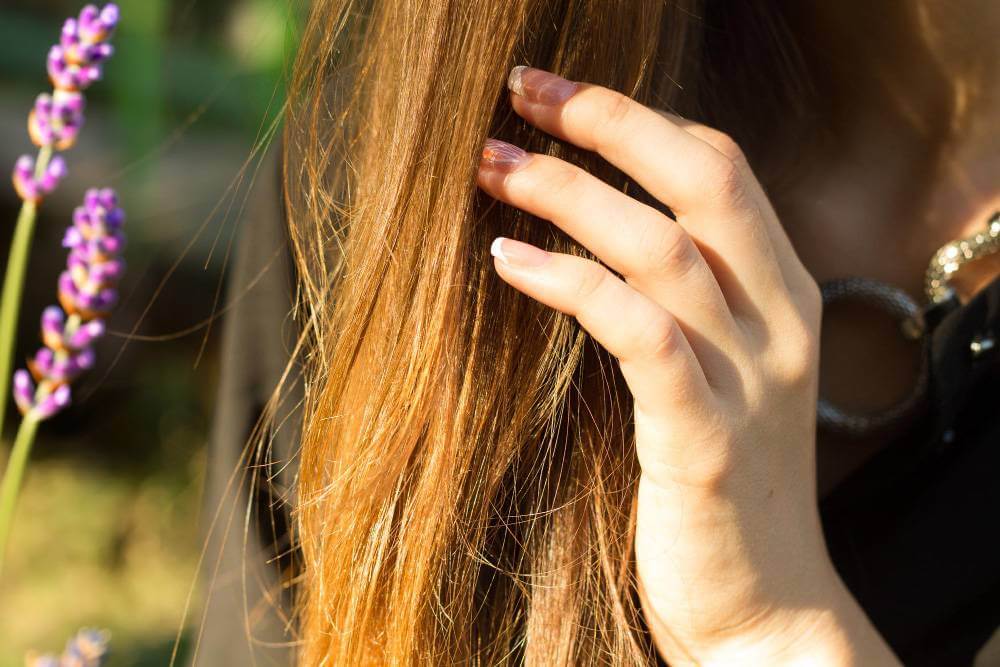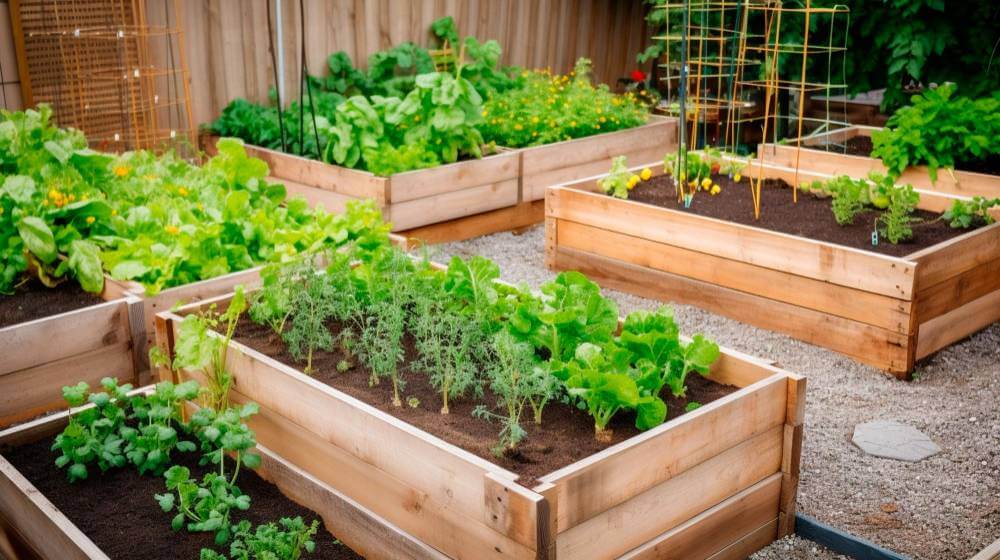Welcome dear gardeners! In this comprehensive guide, I’ll be your companion on a journey to cultivate the most fragrant and flavorful basil plants imaginable. Whether you’re a seasoned gardener or a budding herb aficionado, prepare to unlock the secrets of successful basil cultivation. With a sprinkle of care, a dash of knowledge, and a pinch of patience, you’ll soon be reaping the aromatic rewards of your own basil bounty.
Benefits and Typical Uses Of Basil
Before we delve into the nitty-gritty of growing basil, let’s savor the enticing array of benefits and uses this versatile herb offers. Not only does basil add a burst of freshness to culinary creations, but it also boasts an impressive array of health benefits. From its antibacterial properties to its rich antioxidant content, basil is a true powerhouse herb. Whether you’re whipping up a classic Caprese salad, infusing oils for a gourmet touch, or crafting a zesty pesto sauce, basil elevates every dish to new heights of flavor.
Different Varieties: A Basil for Every Palate
From the classic Genovese basil with its sweet and aromatic leaves to the spicy kick of Thai basil, there’s a basil variety to suit every palate and culinary adventure. Explore the nuances of lemon basil, perfect for adding a citrusy twist to dishes, or embrace the exotic allure of purple basil, with its striking foliage and peppery undertones. With such a dazzling array of options, you’ll never run out of basil-inspired culinary creations to explore.
Annual or Perennial: Decoding Basil’s Lifecycle
Is basil an annual or perennial plant? The answer may surprise you. While basil is typically grown as an annual in most climates, it can behave as a perennial in warmer regions where winters are mild. In temperate climates, basil is best treated as an annual, with new plants grown from seed each year. However, in frost-free zones, basil may persist year-round with proper care, providing a continuous harvest of fresh leaves.
Preferred Planting Season: Timing Is Everything
When it comes to planting basil, timing is everything. While basil thrives in warm weather, it’s essential to wait until all danger of frost has passed before planting outdoors. In temperate climates, this typically means waiting until late spring or early summer to sow basil seeds or transplant seedlings. For those eager to get a head start on the growing season, growing basil indoors allows for year-round cultivation and a continuous supply of fresh herbs.
Sun vs. Shade: Basil’s Light Preferences
When it comes to sunlight, basil thrives in bright, indirect light, making it a perfect candidate for sunny windowsills and garden beds with partial shade. While basil enjoys ample sunlight, especially during the growing season, it can benefit from some respite during the hottest hours of the day. Aim for at least six to eight hours of sunlight daily to promote healthy growth and vibrant foliage.
Tips for Growing Basil in Cold Months
Growing basil during the winter presents unique challenges, but with the right approach, you can enjoy fresh herbs even when the temperatures drop. For indoor cultivation, ensure basil plants receive ample sunlight by placing them near south-facing windows or supplementing with grow lights. Maintain a consistent temperature between 60-70°F (15-21°C) to mimic optimal growing conditions. Keep the soil evenly moist, but avoid overwatering, as basil is susceptible to root rot in soggy conditions. Consider using a humidifier to maintain adequate moisture levels, as indoor heating can dry out the air. If growing basil outdoors in milder climates, provide protection from frost by covering plants with row covers or cloches during cold snaps. Additionally, mulch around the base of plants to insulate roots and retain soil moisture.
Seeds vs. Seedlings: The Great Debate
The age-old question: to sow seeds or to start with seedlings? While both methods have their merits, each comes with its own set of considerations. Sowing basil seeds offers the satisfaction of nurturing plants from their earliest stages and allows for a wider selection of basil varieties. On the other hand, starting with seedlings provides a head start on the growing season and reduces the risk of potential setbacks. Whichever path you choose, rest assured that with proper care, your basil plants will flourish.
Propagating Basil from Cuttings
For basil enthusiasts eager to expand their herb garden, propagating basil from cuttings offers an exciting opportunity to multiply their plant collection. To propagate basil from cuttings, select healthy stems with several sets of leaves and trim them just below a leaf node. Remove any lower leaves to expose the nodes where roots will emerge. Place the cuttings in a container filled with water, ensuring that the nodes are submerged while the leaves remain above the waterline. Change the water every few days to prevent stagnation and monitor the cuttings for root development. Once roots have formed, transplant the cuttings into a well-draining potting mix and continue to care for them as you would seed-grown basil. With a little patience and nurturing, you’ll soon have a thriving basil garden filled with aromatic foliage ready to enhance your culinary creations.
Basil Bliss: Indoor vs. Outdoor Cultivation
Deciding whether to grow basil indoors or outdoors depends on various factors, including climate, space availability, and personal preference. Indoor cultivation of basil offers the convenience of year-round access to fresh herbs, regardless of outdoor conditions. It’s especially beneficial for those in colder climates or urban dwellers with limited outdoor space. To grow basil indoors successfully, provide ample sunlight or supplement with grow lights, ensuring the plants receive at least six hours of light per day. Use well-draining potting soil and water consistently to keep the soil evenly moist. Outdoor cultivation, however, is favored by those with ample garden space and favorable growing conditions. Basil thrives in warm temperatures and plenty of sunlight, making it ideal for outdoor gardens. Directly sow seeds or transplant seedlings into well-draining soil in a sunny location. With proper care and attention, both indoor and outdoor basil cultivation can yield abundant harvests of fragrant leaves for culinary delights.
Best Soil for Basil: Grounds for Growth
As any seasoned gardener knows, the key to a thriving garden lies in the soil. Basil prefers well-draining soil with a slightly acidic to neutral pH, rich in organic matter. A loose, friable texture ensures ample aeration and prevents waterlogging, while good drainage prevents the risk of root rot. Whether planting in containers or in the garden bed, amending the soil with compost or aged manure provides a nutrient-rich foundation for basil’s growth.
Potting Basil: Tips for Thriving in Containers
Growing basil in pots offers a convenient option for urban dwellers or those with limited outdoor space. However, there are a few special considerations to keep in mind when cultivating basil in pots compared to traditional soil planting. Firstly, choose a pot with sufficient drainage holes to prevent waterlogging, as excess moisture can quickly lead to root rot. Secondly, select a high-quality potting mix specifically formulated for container gardening, as it provides the ideal balance of nutrients and aeration for healthy basil growth. Finally, be mindful of watering frequency, as potted basil may require more frequent watering than plants in the ground due to faster evaporation from the potting mix.
Hydroponic Basil: Growing Green Without Soil
Wondering if basil can thrive in a hydroponic setup? Absolutely! Basil is well-suited for hydroponic cultivation, offering faster growth rates and higher yields compared to traditional soil methods. To start, select healthy basil cuttings and place them in a container filled with aerated water enriched with hydroponic nutrients. Ensure that the water level covers the stems but leaves the leaves above the surface to prevent rot. With proper monitoring of pH levels, nutrient concentrations, and lighting, you can enjoy a continuous harvest of fresh basil leaves year-round, all without ever touching a speck of soil.
Watering Instructions: Quenching Basil’s Thirst
Like all plants, basil requires adequate hydration to thrive, but finding the right balance is key. While basil enjoys consistently moist soil, it’s essential to avoid overwatering, which can lead to root rot and other issues. Water basil plants deeply but infrequently, allowing the top inch of soil to dry out between waterings. During hot weather or periods of drought, increase watering frequency to keep basil plants happy and hydrated.
Companion Planting: Basil’s Garden Allies
In the bustling ecosystem of the garden, basil shines as a companion plant, offering both flavor and protection to its neighboring flora. Plant basil alongside tomatoes to enhance their flavor and deter pests, or tuck it among peppers and eggplants for a harmonious trio of garden goodness. Basil also makes an excellent companion for beans, cucumbers, and lettuce, providing a natural deterrent against pests and attracting beneficial insects to the garden.
Planting Foes: Basil’s Incompatible Companions
While basil plays well with many garden companions, there are a few plants it’s best to keep at arm’s length. Avoid planting basil near rue, as it may inhibit basil’s growth and flavor. Similarly, keep basil away from fennel, as these two herbs can inhibit each other’s growth when planted in close proximity. By choosing basil’s garden companions wisely, you’ll foster a thriving ecosystem where each plant can flourish.
Pollinator Paradise: Basil’s Floral Attraction
As an added bonus, basil’s fragrant blooms serve as a magnet for pollinators, attracting bees, butterflies, and other beneficial insects to the garden. By planting basil alongside other flowering plants, you’ll create a pollinator paradise, ensuring abundant harvests of fruits and vegetables throughout the growing season. Embrace the biodiversity of the garden and watch as basil blossoms beckon a symphony of buzzing visitors.
Pruning and Pests: Nurturing Basil to Perfection
To keep basil plants in peak condition, regular pruning is essential. Pinch off the topmost leaves of basil plants to encourage bushier growth and prevent them from bolting to seed prematurely. Keep an eye out for common basil pests such as aphids, whiteflies, and spider mites, and take prompt action to prevent infestations. Neem oil or insecticidal soap can help control pests naturally, keeping basil plants healthy and vibrant.
Wrapping Up
And there you have it, fellow herb enthusiasts – the ultimate guide to growing basil tips and tricks! Armed with this newfound knowledge, you’re ready to embark on your own basil-growing adventure, cultivating fragrant foliage and flavorful leaves with ease. Whether you’re tending to basil in pots on the windowsill or nurturing a sprawling garden bed, may your harvests be bountiful and your culinary creations be sublime.
Stay tuned for more gardening wisdom and herbaceous delights in future blog posts!







